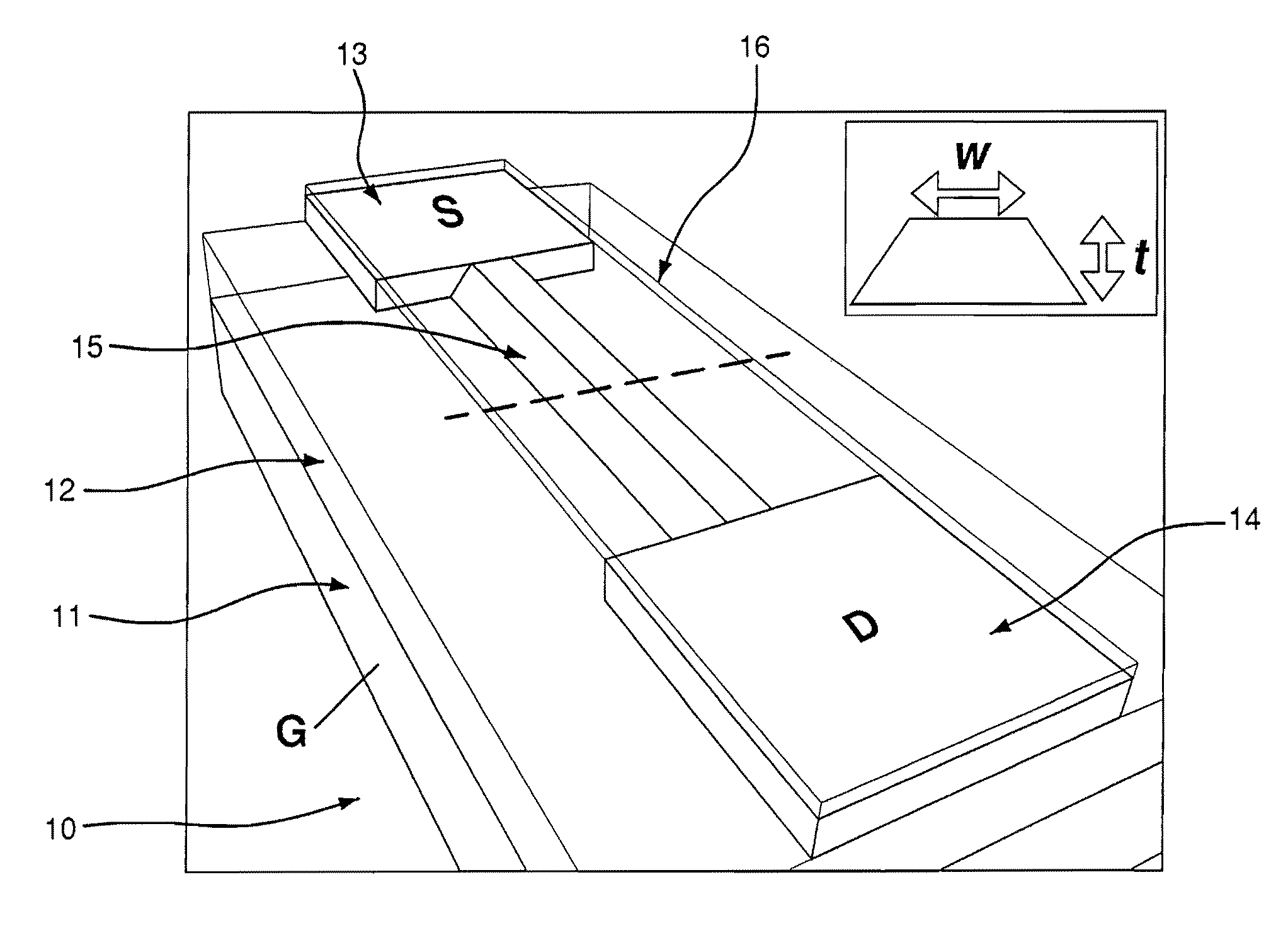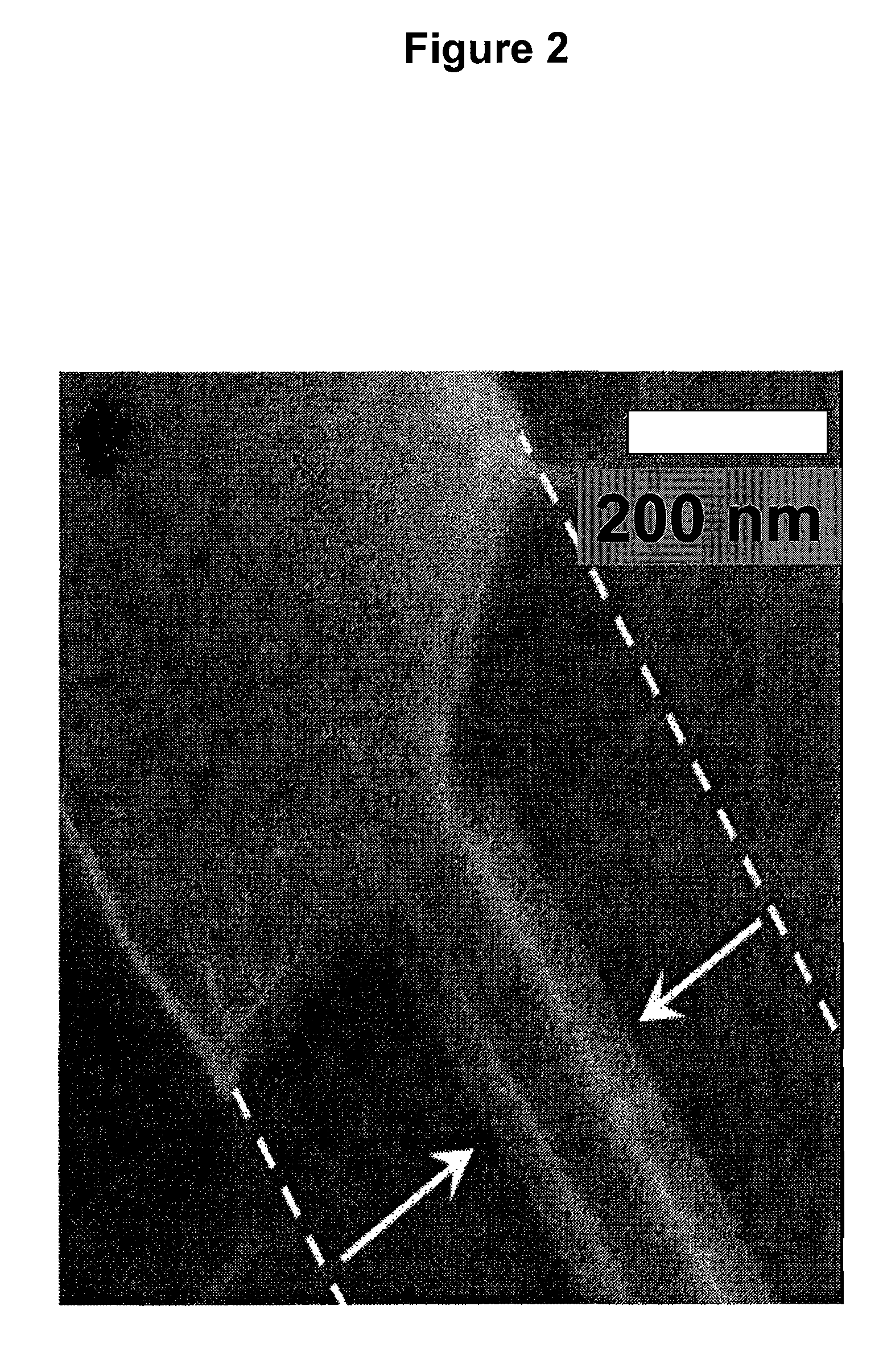Nanoelectronic-enzyme linked immunosorbent assay system and method
a technology of immunosorbent assay and nano-enzyme, which is applied in the field of nano-enzyme linked immunosorbent assay system and method, can solve the problems of poor sensing capability, unreliable product performance and consistency, and typical silicon-based nano-wire fabrication process exhibit relatively poor material and device service li
- Summary
- Abstract
- Description
- Claims
- Application Information
AI Technical Summary
Benefits of technology
Problems solved by technology
Method used
Image
Examples
experimental examples
[0140]In one embodiment, indium oxide nanowires were used. These nanowires were grown by the laser-ablated hot-wall chemical vapor deposition method using a gold catalyst. Devices were fabricated on 2-inch wafers with a global backgate, and contacts to the nanowires were defined with a nickel / gold (Ni / Au) stack. After preliminary screening, wafers were diced and functionalized as shown in FIG. 21B. This scheme was designed to solely functionalize the gold leads due to thiol-mediated self-assembled monolayer (SAM) formation. Thus, surface hydroxyl groups on the indium oxide nanowires was maintained and available for protonation and deprotonation necessary for measuring solution pH. FIG. 22A is a scanning electron micrograph of a representative device, a ˜50-nm diameter nanowire between Ni / Au leads.
[0141]Samples were first treated with ω-mercaptocarboxylic acid (FIG. 21B-i) to confer carboxylic acid functionality to the gold leads. Gold leads contacting the nanowires were used for con...
PUM
| Property | Measurement | Unit |
|---|---|---|
| length | aaaaa | aaaaa |
| T cell response time | aaaaa | aaaaa |
| pH | aaaaa | aaaaa |
Abstract
Description
Claims
Application Information
 Login to View More
Login to View More - R&D
- Intellectual Property
- Life Sciences
- Materials
- Tech Scout
- Unparalleled Data Quality
- Higher Quality Content
- 60% Fewer Hallucinations
Browse by: Latest US Patents, China's latest patents, Technical Efficacy Thesaurus, Application Domain, Technology Topic, Popular Technical Reports.
© 2025 PatSnap. All rights reserved.Legal|Privacy policy|Modern Slavery Act Transparency Statement|Sitemap|About US| Contact US: help@patsnap.com



